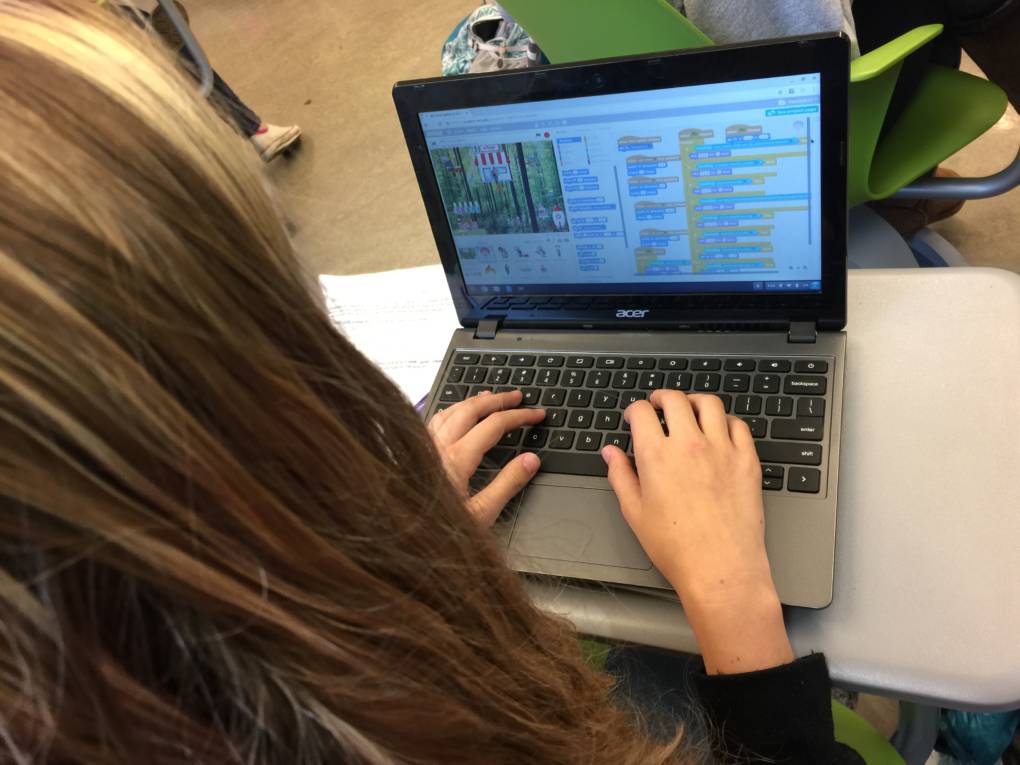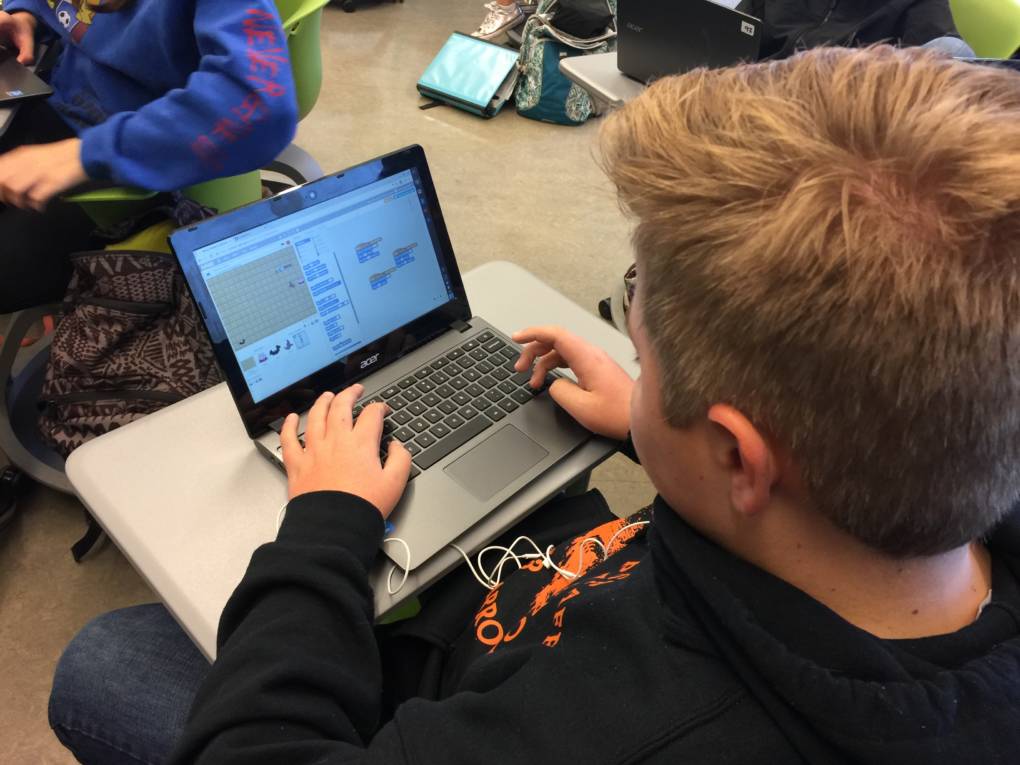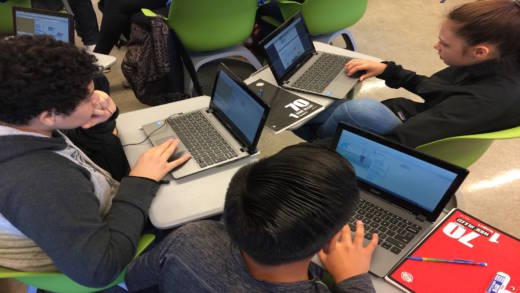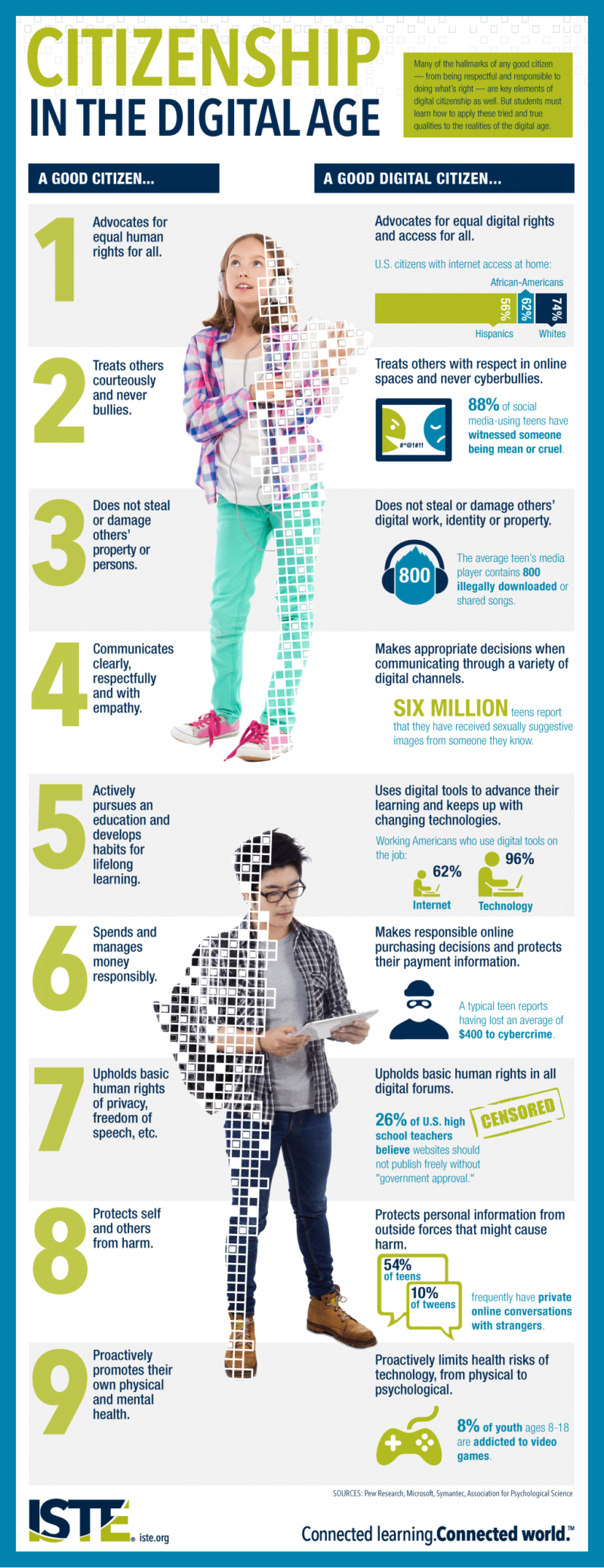Many teachers and students on our middle school campus rely on free resources from Scratch.mit.edu, a site developed by the Lifelong Kindergarten Group at the MIT Media Lab, to introduce students to coding and engage them in creative projects. Some of our teachers include Scratch in their annual Hour of Code offerings; two teachers offer Scratch coding as part of their Design Lab classes; students in my English classes further their study of narrative by designing and coding Scratch games; another teacher uses Scratch in his Robotics and Engineering class; our librarian hosts a coding club in the library; and many of our students continue to build their coding skills with Scratch on their own. On any given day, one can expect to see some of our students working on Scratch coding projects.
In addition to being a 1:1 iPad school where technology is integrated in many content areas, we have also been teaching digital citizenship through a campus-wide approach for a few years.
Our teachers use lessons from Common Sense Media, as well as work together to develop lessons of our own. We also take advantage of the many digital citizenship PSAs on YouTube to encourage our students to work and play safely and responsibly in online spaces.
[media-credit id=11343 align="alignnone" width="640"] [/media-credit]
[/media-credit]
[media-credit id=11343 align="alignnone" width="640"] [/media-credit]
[/media-credit]
Imagine my surprise, then, when a Design Lab student logging into his Scratch account called out, “Hey! What happened? My account’s been banned!” I assumed it was an error on his part. After years of working with middle school students and technology, I know that, “It won’t let me log in,” often means, “I forgot my password.” But then the student said, “Our whole school has been banned! It’s our I.P. address!” Now we’re talking serious business. A temporarily banned account can happen when a user violates a term of use, but a banned I.P. address means many of our students must have been seriously inappropriate on the site. This called for an investigation and prompt action.

 [/media-credit]
[/media-credit]